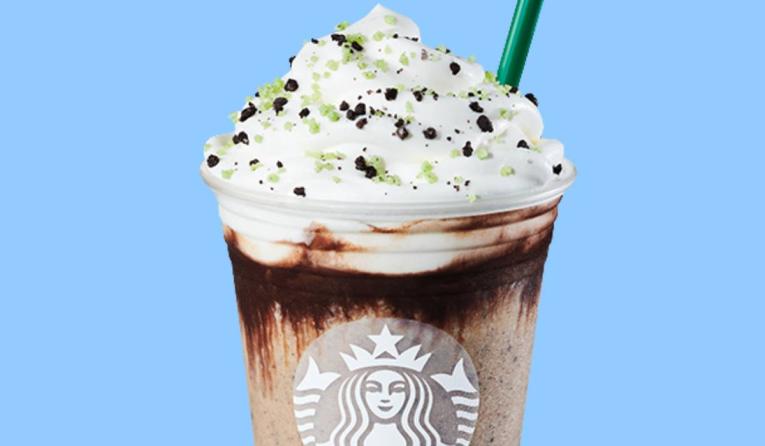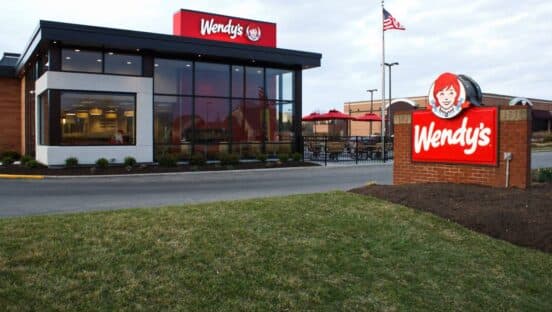Starbucks generated the highest weekly sales in its history this past quarter. The why owes to three points, CEO Laxman Narasimhan told investors during the brand’s Q3 recap. Firstly, more Starbucks guests are attaching food to their coffee orders than ever, especially with breakfast sandwiches. This drove higher ticket, improved volume growth, and led Narasimhan to hint Starbucks would “explore new, elevated, and convenient food offerings” in the future.
To put the shift in perspective, two out of every five customers this past quarter attached food to orders, up 25 percent from five years ago. Overall, Starbucks’ U.S. business delivered 7 percent same-store sales growth in Q3 as ticket grew 6 percent and transactions 1 percent. The weekly sales number (the exact figure wasn’t shared) broke a company record set during this past holiday season. Customer counts rose 5 percent, year-over-year—also in line with a high mark achieved in Q1 2023.
The two other drivers were “judicious” pricing and growing customization within Starbucks’ business. That broke apart as follows: transactions in Q3 lifted year-over-year across all dayparts. Traffic, however, remains below 2019 levels but units per store are above the 2019 average, thanks to higher food attach. Starbucks’ unit volumes outpaced pre-COVID marks by double-digits.
Q2 REWIND: Starbucks New CEO: We Will Deliver Connection
So food plus customization plus price is pushing Starbucks into new air. Additionally, the brand continues to see improvements in items sold per labor hours as it works through equipment and labor fixes.
But turning to Narasimhan’s spotlight on customization, Starbucks’ cold business reached 75 percent of U.S. beverage sales in Q3. Cold espresso beverages in particular rose 13 percent, year-over-year. Starbucks rolled new cold foam blenders to all U.S. company-run units as it embraced the summer rush for Refresher frozen drinks. Narasimhan called the rollout “one of the fastest … in our history in terms of how it’s reached all our stores.”
There’s no grand mystery why Starbucks hurried the pace: cold foam represents the quickest-growing customization across all of the brand’s options. Modifiers, including cold foam, now contribute more than $1 billon in revenue annually.
Starbucks Refreshers, which Narasimhan said skew toward an alternate occasion, witnessed double-digit expansion in Q3 through every daypart. Naturally, Starbucks will amp that up going forward, including cold-pressed cold brew, which enters testing across “a few dozen stores” in Q4 and expects to cover the full U.S. corporate system by the end of fiscal 2024. Developed at Starbucks’ Tryer Center, the patented method extracts coffee with low-pressure immersion, without heating water. Four steps, a matter of seconds, and cold brew delivered as a guest requests it. This historically was a 20-step, 20-hour process where Starbucks spends $50 million per year on labor just to make cold brew coffee.
Customization, in general, is a topic that’s pulsed at Starbucks in recent years as it moved away from headline-grabbing LTOs (think Unicorn Frappuccino) in favor of platform innovation.
In Q3, for instance, more than 60 percent of beverages were customized, 9 percent higher than five years ago.
“Our customers have relatively adopted the practice of customizing their beverages, allowing for a more personalized and differentiated experience while contributing to a growing higher-margin ticket with abundant opportunity ahead,” CFO Rachel Ruggeri said.
The company’s 90-day active rewards base grew to nearly 75 million globally, up 25 percent. Stateside, the figure is 31.4 million, which is about 15 percent, or 4 million new customers, higher than the previous year.
This loyalty arena is fueling Starbucks’ customization revolution. The U.S. pool drove 57 percent of tender for the second consecutive quarter—3 percentage points above last year. Spend per member reached a record high, as did total member spend. Narasimhan said rewards users come in more frequently, buy more, and, interestingly, tend to order larger sizes than typical consumers. “So we’re not seeing the down-trading in our customer base,” he said.
Since 2019, Starbucks record an 80 percent-plus increase in active rewards membership. One lever the brand pulled more recently is its “Connect” platform, where licensed stores can take rewards payment and integration. That’s up to 40 percent of non-corporate units today, including every major U.S. airport outpost.
Returning to Starbucks’ equipment and labor moves, Narasimhan said the brand’s “barista attrition” improved by 11 percent, year-over-year. “Through scheduling and staffing improvements, we are beginning to increase the number of hours per partner in store, critical to running great stores and improving partner engagement while also improving productivity,” he said.
Peaks are growing faster than other dayparts, Narasimhan added, showing real-time results in action. Take-home pay for baristas improved 20 percent, year-over-year, and “more improvements [are] coming,” he noted.
“We’re going to ensure that we continue to increase these average hours through better staffing and scheduling but also work to accommodate their preferences, including the many that we attract to a keen on a part-time schedule,” Narasimhan said.
The brand continues to roll its Clover Vertica system, which can serve a cup of coffee on demand in less than 30 seconds, including decaf. Each machine is topped by six hoppers and brewers don’t require paper filters. Previously, every 30 minutes, employees would need to grind coffee beans, batch it in paper filters, and brew. They threw away anything unsold each half hour—a cycle of grind, batch, dump, do over. Clover Vertica brewers began to roll out in Q2 and project to be in nearly 50 percent of company-operated U.S. locations by the end of the fiscal calendar.
Mastrena 2 espresso machines and new warming ovens are also now in all U.S. corporate venues. The latter are key to the food-attach jump. Breakfast sandwiches took 65–80 seconds to individually warm in ovens. Now, they’re batched cooks and placed in a heating rack, or warming wall, next to the drive-thru window.
“Taken all together, our equipment investments that we began last year are supporting labor efficiencies, allowing us to increase capacity during our busiest dayparts,” Narasimhan said.
Starbucks was the fastest-growing restaurant chain in the country across 2022, according to the QSR 50. The brand added a net of 429 stores, ahead of Crumbl Cookies (363) and Jersey Mike’s (297). Still, Narasimhan feels the brand has “significant headroom” in underpenetrated areas across America, including smaller cities as well as new formats in larger metros. New builds and remodels will prioritize Starbucks’ “Siren System” equipment. Starbucks plans to move all units to brand-forward digital menuboards “over the next couple of years” as well in an effort to sharpen personalization and daypart activation.
The company opened 588 net new stores in Q3, crossing the 37,000-store count threshold globally, ending the period with 37,222 (51 percent company-operated and 49 percent licensed).
At the end of Q3, stores in the U.S. and China comprised 61 percent of the company’s global portfolio, with 16,144 and 6,480 stores in the U.S. and China, respectively.
Starbucks’ Siren package in on track to launch in conjunction with renovations and new openings next year. Ruggeri said less than 10 percent of stores will have the setup in 2024 and 40 percent should onboard by 2026. “It will be one of the many, what I’d say, equipment investments we’re making as well as the investments we’re making in the staffing and scheduling within our stores as well as the overall operational excellence focus that the team has,” she said.
Starbucks’ delivery business has also elevated to a nearly $1 billion “incremental leg” from a minimal presence just a few years ago, Narasimhan said. “And now,” he added, “we are operationally setting ourselves up for this channel in major markets, starting from a position of strength.” Delivery sales doubled in Q3 compared to a year ago, most of which Narasimhan claims is incremental occasions for Starbucks customers.
Starbucks’ Q3 consolidated revenue also reached a water mark $9.2 billion, up 12 percent from the prior year.










